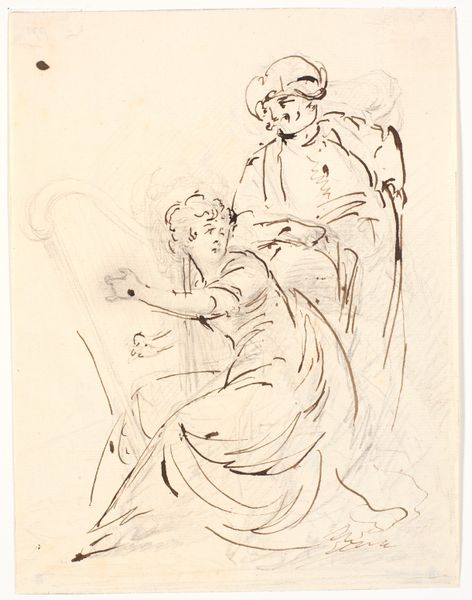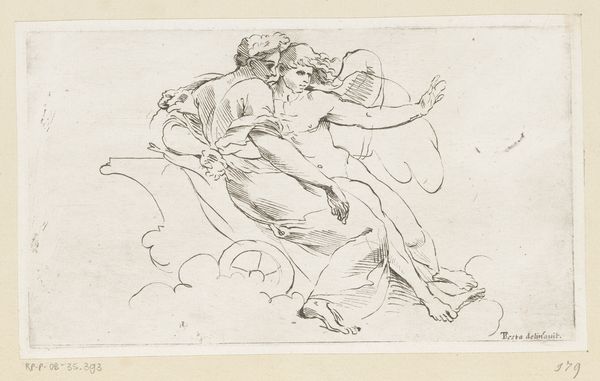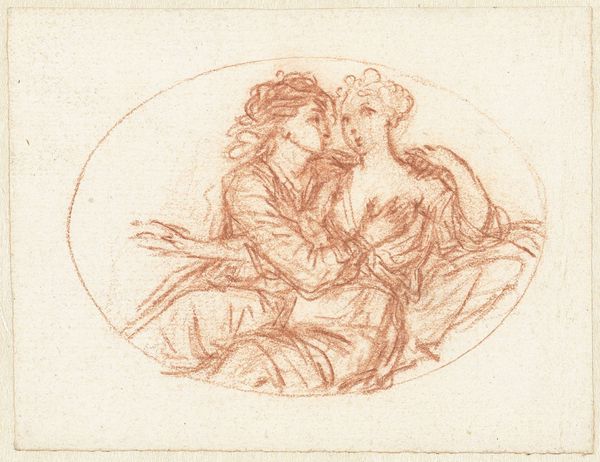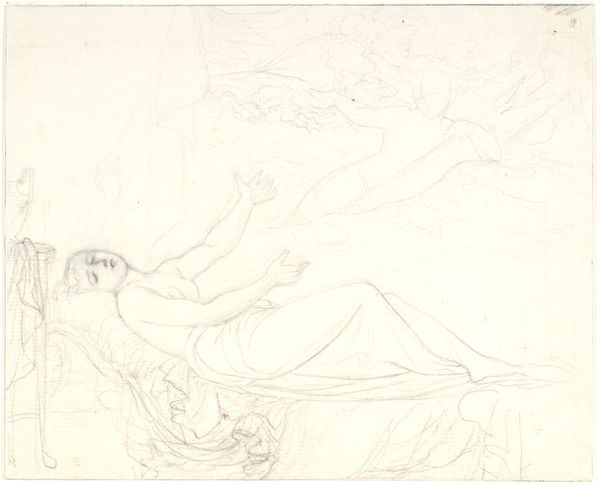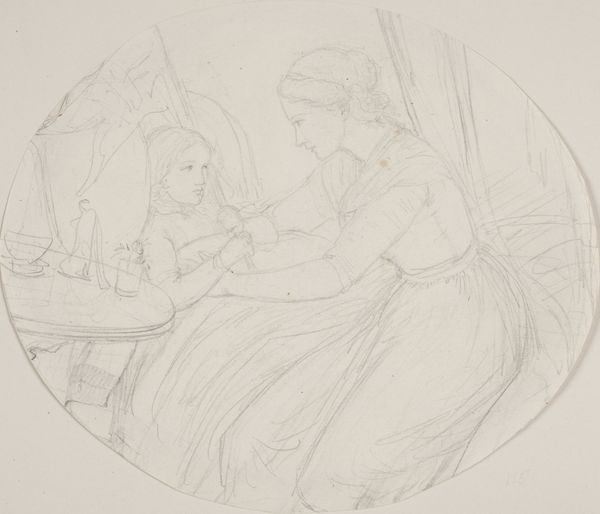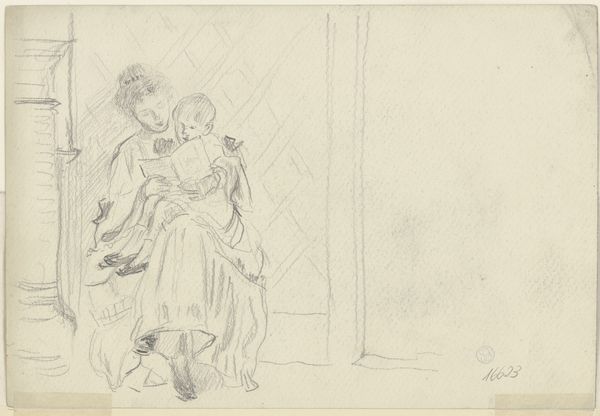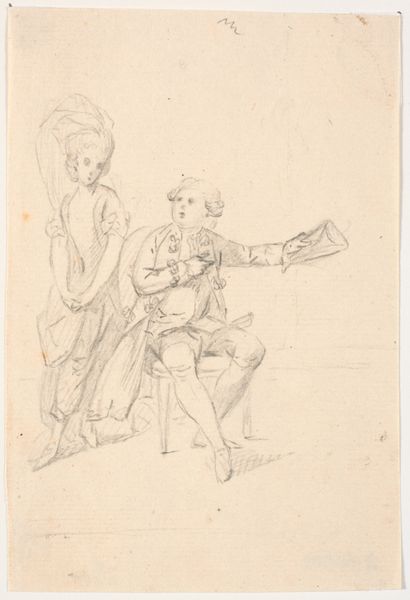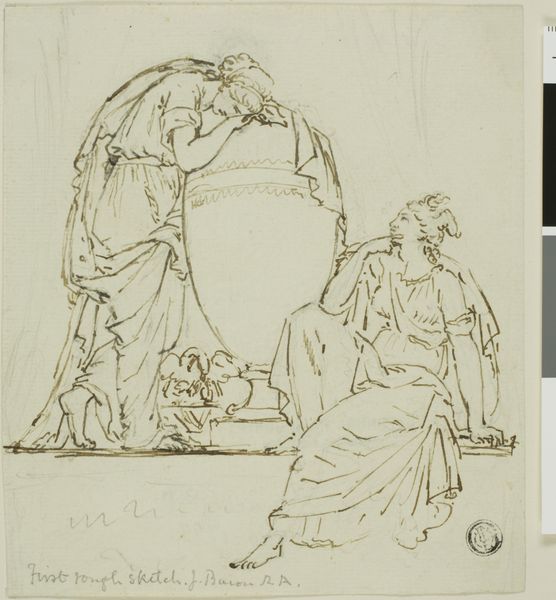
En moder leger med sit barn, der griber efter et æble 1743 - 1809
0:00
0:00
drawing, ink, pencil
#
portrait
#
drawing
#
neoclacissism
#
ink drawing
#
pen sketch
#
figuration
#
ink
#
pencil
Dimensions: 115 mm (height) x 184 mm (width) (bladmaal)
Curator: Here we have Nicolai Abildgaard's "A Mother Playing with Her Child, Who Is Grasping for an Apple," created sometime between 1743 and 1809. It’s a drawing rendered in ink and pencil, currently residing here at the SMK. What are your first thoughts? Editor: My initial reaction is one of simplicity. The sparseness of the lines gives it a raw, almost vulnerable quality. It's intimate. You can feel the immediacy of the captured moment. Curator: That intimacy speaks volumes about Abildgaard's project to elevate the domestic sphere, which was quite prevalent in Neoclassical art. The artwork presents a scene that centers the mother-child relationship. Editor: Absolutely. In this work, we’re presented with an almost idealized vision of motherhood and childhood. There's this fascinating interplay between power and vulnerability in the mother's stance. She’s robust, almost statuesque, but her gaze is tender. Curator: Yes, and observe the composition. The mother, dressed in classical robes, anchors the image. Her idealized form serves as both a representation of virtue and, arguably, a reflection of the political leanings of the period, perhaps even pointing to a particular class identity. Editor: The way the child reaches for the apple – a symbol laden with interpretations of knowledge and temptation – prompts reflection on the burdens of the narrative Abildgaard lays out before the two subjects. It challenges me to examine my preconceptions about the history of that specific dynamic within similar domestic settings. The drawing style creates an atmosphere where all details are open for scrutiny, but can also easily be seen as something fleeting. Curator: Indeed. The sketch-like quality offers the scene immediacy but it also allows the figures to become somewhat universal. The artist is depicting archetypes. And perhaps more universally for today's audience, Abildgaard asks us to appreciate an idealization of care at a basic human level. Editor: I agree. Despite the work having a connection to another period, it allows room for interpretation. It encourages you to bring in all manner of narratives about nurture. Curator: An observation very well noted. This brief exchange brings new light and appreciation for the artwork. Editor: I appreciate the chance to be here with you today, and yes, this really challenges a viewing of art as being separate from contemporary narratives.
Comments
No comments
Be the first to comment and join the conversation on the ultimate creative platform.
